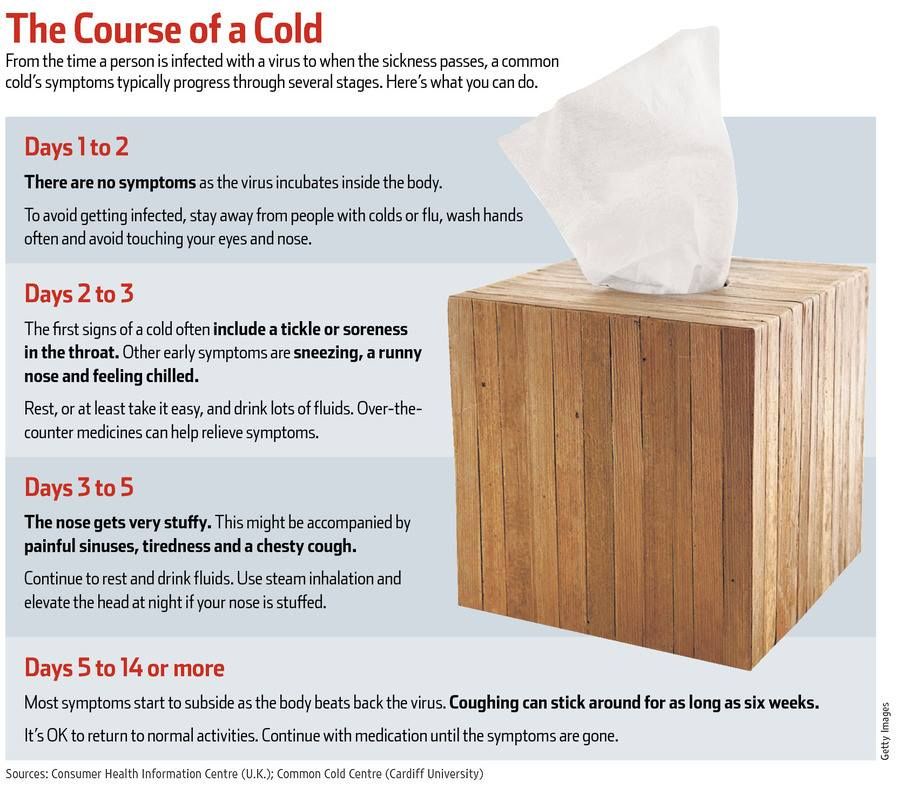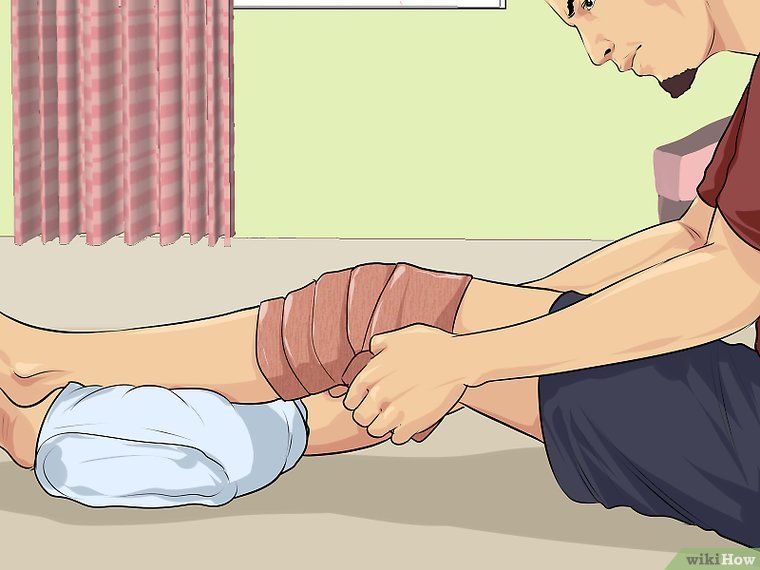How to deal with child anxiety at bedtime
12 Kid Friendly Strategies to Calm Anxiety at Night from a Child Therapist — Coping Skills for Kids
affiliate links in post, read our disclosure policy
Inside: 12 proven strategies to help your child's anxiety and help them settle in for a long night’s sleep
You're finally settling onto your couch, remote in hand and ready to start binge watching your latest Netflix obsession. You're just about to press play when you hear tiny feet padding down the hall.
“Mommy? I can't sleep. I'm scared!!”
How many times has this happened? Your child has struggled with their nighttime fears for what feels like forever and you've tried all the tricks you know - setting up a regular routine,, reassuring him nothing will happen, night lights, warm milk, laying down with him, etc. Nothing is working. What can you do? Here are a few ideas that have worked for my clients and my own children.
Pinpoint what the fear isOne of the most important things to do is to figure out exactly what is causing the anxiety. Is it fear of the dark? Is it a worry about something in the closet? Is it monsters? Is it spiders? Figuring out the cause of the fear will help you come up with ways you can help your child combat it.
Are there particular spots of the room that seem to be darker or cause more fear at night than others? Go into the bedroom during the day with your child and talk about the spots that make your child nervous. Try moving night lights and furniture around for a more calming room arrangement.
Calming ScriptsThere are scripts written specifically to help calm children and relax them at night. You can read them a script like this one from Inner Health Studio that is focused on helping them not be afraid of the dark. Or you could have them listen to a pre-recorded script. Here's one I love called Sleep Tight from the Book Sitting Still Like A Frog by Eline Snel.
Transitional ObjectsIf your child has a hard time separating from you, try a transitional object. This is a special item that helps your child feel comforted. It helps them feel like part of you is still present even when you're not there. It could be something like a stuffed animal or a special stone or necklace, or a sweatshirt of yours. The object isn’t what matters, it’s what the object represents. They can keep it and hold it all night long to help them relax and go to sleep.
This is a special item that helps your child feel comforted. It helps them feel like part of you is still present even when you're not there. It could be something like a stuffed animal or a special stone or necklace, or a sweatshirt of yours. The object isn’t what matters, it’s what the object represents. They can keep it and hold it all night long to help them relax and go to sleep.
There are several children’s books that have characters who are afraid of the dark. Sometimes it helps kids to know they're not the only ones who get scared. Try reading one of these to help your child realize they’re not the only one who gets scared at night.
YogaCertain yoga poses are helpful for calming a body down and getting ready for rest at night. One of my favorites is to have your child lay down on their back with their legs perpendicular up against a wall. Have them put their arms out to their sides. Encourage them to do some deep breathing as they lay like this. If it’s possible, have them do this pose in their bed, so it’s easier to transition them to laying in bed for sleep.
Encourage them to do some deep breathing as they lay like this. If it’s possible, have them do this pose in their bed, so it’s easier to transition them to laying in bed for sleep.
For other ideas, take a look at these yoga poses for sleep from Parents Magazine.
Progressive Muscle Relaxation, or PMR, is a systematic way of going through all your muscle groups to tense and relax the muscles, typically starting at the top of your body and going all the way down. Usually after tensing and relaxing muscles, your body feels more relaxed. Try doing a whole body progressive muscle relaxation designed especially for for kids.
AudiobooksOne thing my kids love to do is listen to audiobooks in bed. There are so many great kids’ titles out there. The beauty of apps like of Audible is that they usually have a sleep timer. They can distract themselves from their anxiety by listening to a story while they relax in their bed.
Try a different nightlightThere are so many types of night lights you can try. When my kids were younger, they both loved the what they called their “Turtle” night light. It was the Cloud b Twilight Constellation Night Light, and when it was lit up at night, it showed constellations on the ceiling and walls in their room.
When my kids were younger, they both loved the what they called their “Turtle” night light. It was the Cloud b Twilight Constellation Night Light, and when it was lit up at night, it showed constellations on the ceiling and walls in their room.
Now my son is partial to the Projectables LED Plug-In Night Light of Spider-Man. This displays a huge image of Spider-Man wherever the light is pointed. My son loves the idea that a superhero is in his room at night with him.
There are some other neat nightlights too, try a new one and see how your child responds.
Calming Sounds AppsThere are apps that have sounds you can have your child listen to as background noise, if they get scared of unusual noises at night. Some have nature sounds, some have soothing music. Others have sleep scripts as part of the app as well. Try out a few and see what works best for your child. Here are some free ones I like:
- Relax melodies
- Relaxing sounds
- Nature Sounds Relax and Sleep
- Relaxing Sounds
Did you know there are podcasts with bedtime stories for children? Usually the hosts have a soothing voice and the stories tend to be pretty short.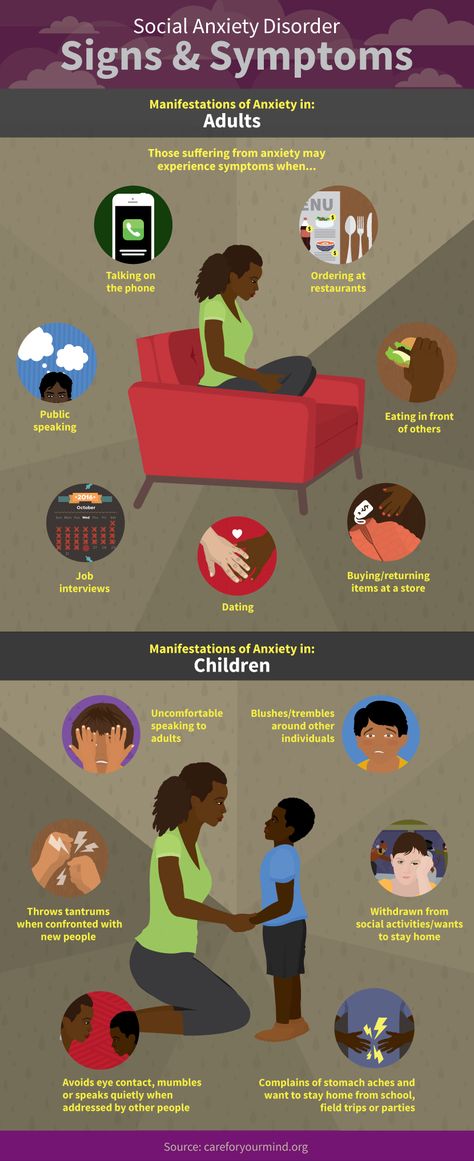 You can even listen to these podcasts during the day as a way to have some down time, too.
You can even listen to these podcasts during the day as a way to have some down time, too.
- Tales from the Lilypad
- Story Time
- Stories Podcast
- Storynory
Watching the glitter settle in a calming jar is a simple way to help kids settle their minds. Have them imagine their mind settling and calming as the glitter settles in the bottom of the jar. You can make it really simple with glitter paint and sequins or make it fancier with glow in the dark stars, Legos or other items.
Your child sits in bed watching their calming jar swirl. He spins it again and watches intently. “I'd like to listen to James and the Giant Peach tonight” as he snuggles under his sheets and gets ready for a peaceful night’s sleep.
Sleep & Anxiety | KidsHealth NZ
Sleep & Anxiety
Anxiety is probably a common cause of difficulties settling to sleep at both the start of the night and overnight. Find out about strategies you can use to help your child.
Key points about sleep and anxiety
- anxiety is probably a common cause of difficulties settling to sleep at both the start of the night and overnight
- you can help by trying to understand your child's fears
- acknowledge that being scared or worried is normal and that all people feel scared or worried sometimes
- avoid scary TV shows, including the news or videos, or stories that may add to your child's fears
- teach your child skills to get over their fears
- teaching your child to relax can help them to fall asleep at bedtime
This page is about sleep in primary school children. It's part of a whole section on sleeping sound.
How can anxiety affect my child's sleep?
Anxiety is probably a common cause of difficulties settling to sleep at both the start of the night and overnight. Many children cannot say exactly what is worrying them but may be anxious about day-to-day life in general.
Should I try to understand my child's fears?
Try to understand your child's fears.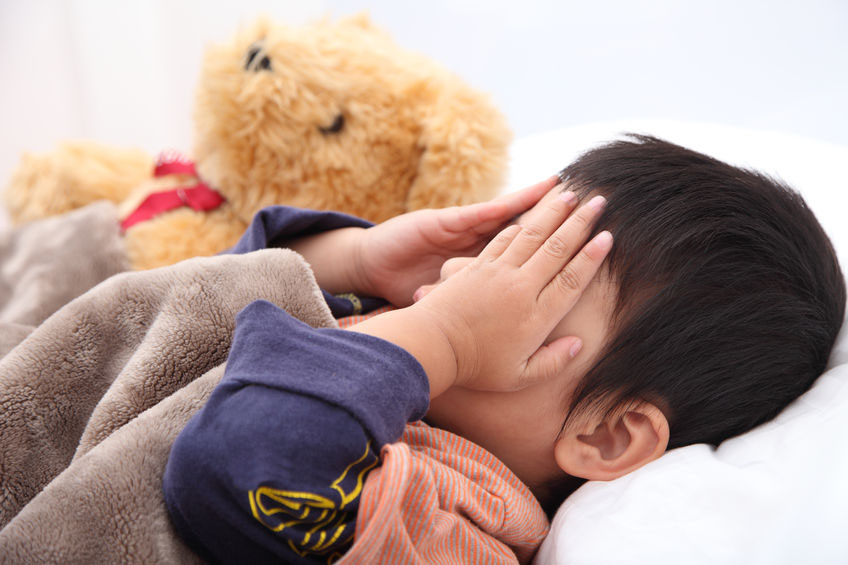 Do not ignore or make fun of them because fears that seem silly to you may be very real to a child.
Do not ignore or make fun of them because fears that seem silly to you may be very real to a child.
When is the best time to discuss my child's fears?
Acknowledge that being scared or worried is normal and that all people feel scared or worried sometimes. Let your child know that they can always talk to you about things they feel worried about and together you can work out a solution. Try discussing fear during the day (not just before bedtime). Talk about how they can be less scared at night and reassure them that their bedroom is a safe place. Get them to practice getting rid of their fears by imagining their favourite colour as a big cloud that pushes 'fear' away or making fear into a big balloon that they can prick with a pin to make disappear.
Should I let my child get out of bed if they are scared?
Let your child know that they can always talk to you about things they feel worried about and together you can work out a solution.
Encourage your child to stay in bed. They should stay in bed and find out they are safe, which will help them get over their fears. Letting your child leave the room sends the message that their bedroom isn't really safe. If your child is too scared to stay in their room alone, it is OK to sometimes stay by their bed until they fall asleep. Do not do this too often because they may come to depend on you being there. If your child is anxious about you leaving, check on them. Begin by briefly checking and comforting them, and then increase the time in between checks until they fall asleep. Leave the bedroom door open and think about using a nightlight to decrease your child's fears.
They should stay in bed and find out they are safe, which will help them get over their fears. Letting your child leave the room sends the message that their bedroom isn't really safe. If your child is too scared to stay in their room alone, it is OK to sometimes stay by their bed until they fall asleep. Do not do this too often because they may come to depend on you being there. If your child is anxious about you leaving, check on them. Begin by briefly checking and comforting them, and then increase the time in between checks until they fall asleep. Leave the bedroom door open and think about using a nightlight to decrease your child's fears.
If your child wakes up during the night and can't go back to sleep because they are frightened, go and reassure them that they are safe. If they leave their room and come into yours, take them back and put them back into bed. Tell them again that their room is safe.
How can I comfort my child when they are scared?
It is important to comfort children who are scared.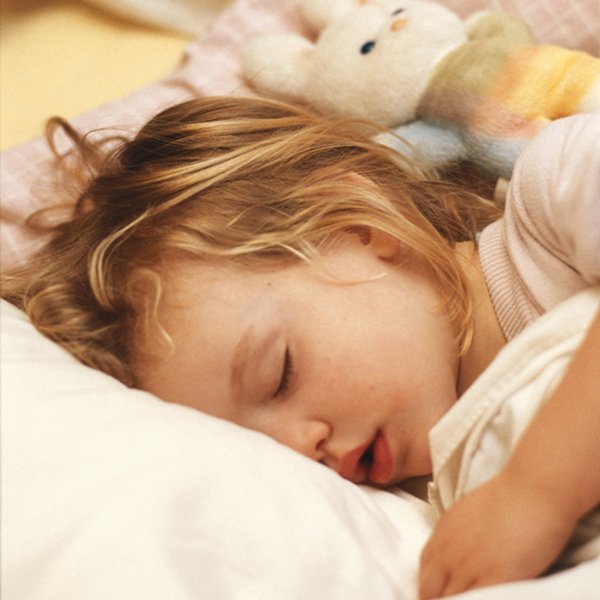 When your child holds onto you as they are being tucked in, or calls out in fear, you should go back to their bed and find out what is wrong. Be sure to tell them that they are safe.
When your child holds onto you as they are being tucked in, or calls out in fear, you should go back to their bed and find out what is wrong. Be sure to tell them that they are safe.
You could say something like this:
"You are safe; we are here to make sure you stay safe."
How can I teach my child to get over their fears?
Teach your child skills to get over their fears. For example:
- discuss ways to respond to nighttime fears, such as by 'being brave' and thinking positive thoughts (for example, 'monsters are just pretend')
- tell your child how you deal with something that frightens you
You can also try reading stories about children who are afraid and conquer their fears.
For example, for younger kids:
- 'David and the worry beast: Helping children cope with anxiety' by Anne Marie Guanci (illustrated by Caroline Attia)
- 'The huge bag of worries' by Virginia Ironside (illustrated by Frank Rodgers)
For older kids:
- 'Mind your mind' by Leigh Hay and Julie Johansen
- 'What to do when you're scared and worried' by James J.
 Crist
Crist
Should I introduce a security object to help my child's fears?
Help your child become attached to a security object like a toy or blanket. They can keep this in bed with them to help them feel more relaxed during the night.
Can scary television shows make my child anxious?
Avoid scary TV shows, including the news or videos, or stories that may add to your child's fears. Avoid talking about their worries just before bedtime.
How can I help my anxious child to relax?
Teaching your child to relax can help them to fall asleep at bedtime. Below are some ideas of how to do this. Giving them something else to think about while lying in bed can help to distract them from their fearful thoughts. Remember, it is impossible to be relaxed and scared at the same time!
Relaxation ideas for your child include the following.
Muscle exercises
Ask your child to lie down with their eyes closed and then get them to tighten and relax all the muscles of their body, one after the other. Some children find it helps to do these muscle exercises whilst thinking about their favourite relaxing place, such as the beach, a park or granny's backyard.
Some children find it helps to do these muscle exercises whilst thinking about their favourite relaxing place, such as the beach, a park or granny's backyard.
Imagining clouds
Ask your child to close their eyes and think about a cloud pushing away the fear.
Drawing a picture
Ask them to draw a picture of their fear and then put it away in a 'scary thoughts' box for the night.
Should I reward my child for staying in bed and being brave?
A reward chart for trying to be brave can be helpful. At first, this may be for not getting out of bed and just calling out if they really feel they need you. Then later, as your child feels safer, you can reward them for staying in bed all night and not calling out.
Reward and praise your child as soon as they wake up in the morning 'for knowing that their bedroom is a safe place to be' and remind them they can always talk to you when they feel worried. The reward should be something small and could involve collecting a certain number of stickers leading to a reward your child will enjoy (such as a lucky dip prize, trip to the park).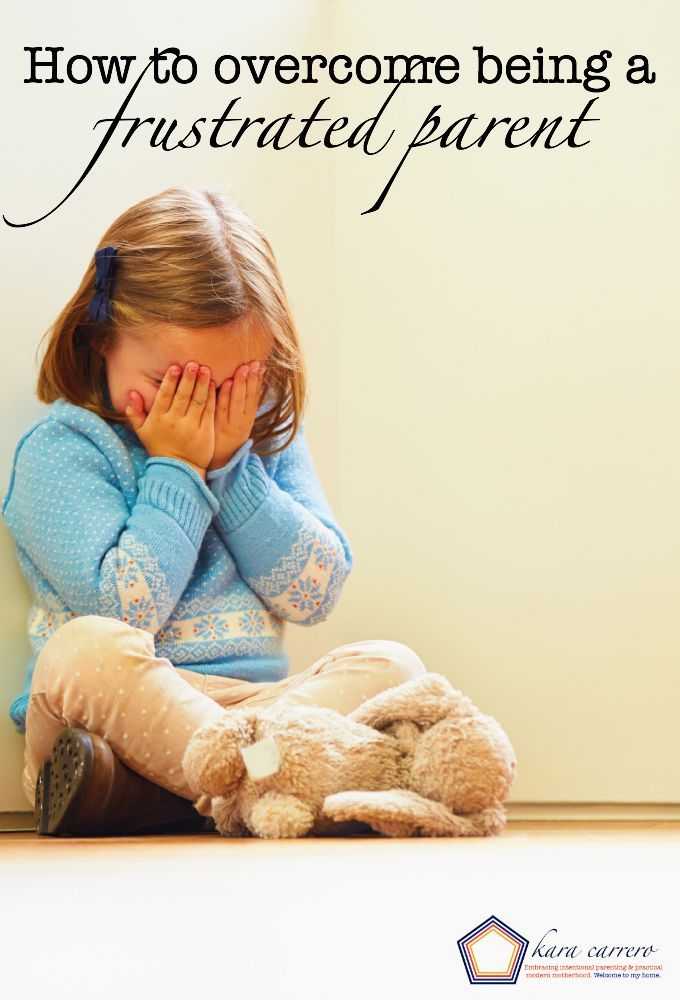 This will vary depending on the age of your child. The reward should be easy to achieve for your child to begin with to increase the chance of your child being able to succeed.
This will vary depending on the age of your child. The reward should be easy to achieve for your child to begin with to increase the chance of your child being able to succeed.
See more KidsHealth content on sleeping sound
Check out KidsHealth's section on sleeping sound
Acknowledgements
External links and downloads
Tags
SleepSleep Problems
This page last reviewed 16 March 2023.
How to Overcome Sleep Anxiety
If you deal with anxiety or sleep disturbances on a regular basis, there are a few simple strategies that can help calm your mind, relax your body, and make it easier for you to sleep. Changing bedtime habits takes time and patience, but over time they can help reduce anxiety.
1. Practice good sleep hygiene
Sleep hygiene refers to various habits that are essential for good quality sleep. Best practices include reducing daytime sleep to 30 minutes, limiting stimulants like coffee and alcohol closer to the night, and going to bed and waking up at the same time.
Best practices include reducing daytime sleep to 30 minutes, limiting stimulants like coffee and alcohol closer to the night, and going to bed and waking up at the same time.
2. Practice meditation
Begin by sitting quietly for a few minutes and focusing on your breath. Learning to quiet your mind and meditate can help you deal with stress, both during the day and before bed. If meditation is difficult for you, try relaxing yoga poses to help your body prepare for sleep.
3. Exercise
Regular exercise has been found to help people fall asleep faster and sounder. Even moderate-intensity exercise, such as brisk walking, can improve sleep for those with chronic insomnia.
4. Take time to relax
Proper sleep preparation will allow your mind and body to slow down before you go to bed. Take at least 30 minutes to take a bath, read a book, listen to a podcast, or listen to soothing music. These transitional rituals can set your brain to associate certain activities with getting ready for bed.
These transitional rituals can set your brain to associate certain activities with getting ready for bed.
5. Avoid stress before bed
Leave office, work, news and social networking for daytime. Experts suggest creating a transition time between work and sleep, which will help you tune in to a good rest.
6. Write down your worries on paper
Instead of letting thoughts and to-do lists go round and round in your head, write them down so your brain has a plan for the next day. Research shows that it may help you fall asleep faster.
7. Stay out of bed if you can't sleep
If you've been in bed for more than 20 minutes and still can't sleep, reset. Get up, get out of the bedroom and engage in a sleep-inducing activity like having a cup of tea or reading a book. This action on conditioned reflexes, known as stimulus control, can help shorten the time it takes to fall asleep.
8.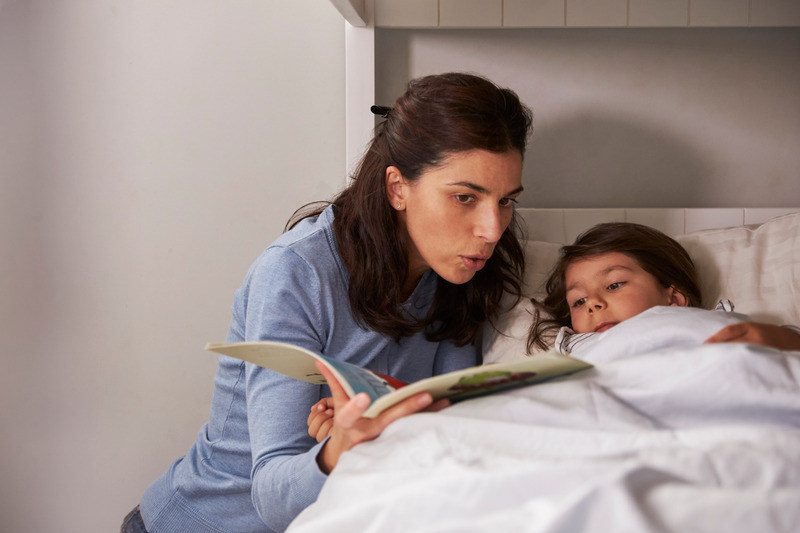 Limit Gadget Use
Limit Gadget Use
Our laptops, phones and tablets emit blue light that suppresses melatonin, making the brain think the sun has risen. Try not to use gadgets one or two hours before you plan to go to bed so as not to disrupt your circadian rhythm.
9. Maintain favorable sleep conditions
Controlling light, sound, and temperature can increase your chances of calming your mind and falling asleep easily. The bedroom should be dark, quiet and cool. Pink noise can also help you focus on your sleep.
10. Get a mattress that suits you
When you sleep on an uncomfortable mattress, pressure builds up and pain points build up on your body, causing you to toss and turn. The right mattress and pillow will help support your body and neck, and keep you cool and comfortable while you sleep. You can order a Kitami mattress with a test drive for 101 nights and not be afraid that you will make the wrong choice. If the mattress does not suit you, Kitami will take it for recycling and refund 100% of the cost.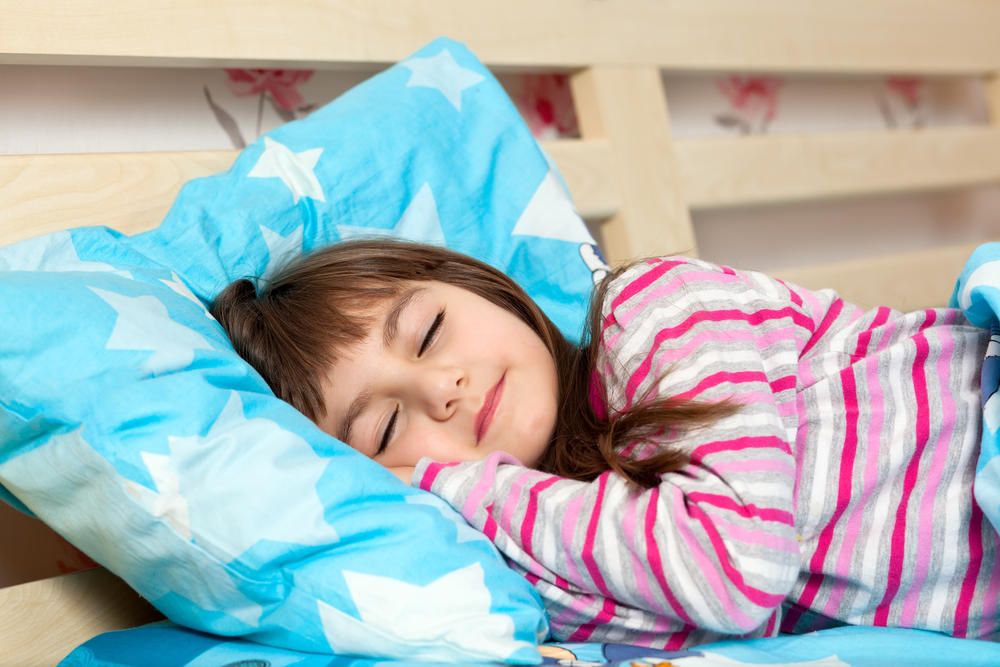 You can choose a mattress here.
You can choose a mattress here.
Dealing with anxiety in children and adolescents. Advice for Parents - Empathy
Just like adults, children and teens experience a lot of anxiety from time to time, and that's normal. But when anxiety begins to affect the well-being of the child, it already needs to be dealt with. What parents can do to help their child cope with expressed anxiety, says Azat Nasifullin, a psychiatrist and child psychiatrist at the Empathy Center.
What causes anxiety in children?
At any age, children can feel anxiety about all sorts of things, but don't get scared right away - it's normal to experience many of these worries at different stages of a child's development.
For example, separation anxiety is very common in children aged 6 months to 3 years. They may become "sticky" and whiny when separated from their parents. This is natural for this period of development of the child, which usually ends at 2-3 years.
Preschoolers often develop specific fears and phobias. In early childhood it is normal to be afraid of animals, insects, heights, darkness, but these fears usually disappear gradually on their own.
In early childhood it is normal to be afraid of animals, insects, heights, darkness, but these fears usually disappear gradually on their own.
There may be other periods of increased anxiety in a child's life. For example, many children and teenagers are very anxious when they start a new school, or before tests and exams.
What are the signs of anxiety in children?
When young children experience anxiety, they may not always understand or express how they feel. In this case, parents should alert the following features in the behavior of children:
- they became irritable, whiny, clingy;
- have trouble sleeping;
- often wake up at night or cannot fall asleep for a long time, can come to their parents in bed;
- start to urinate in bed;
- see nightmares.
Anxiety becomes a problem when it interferes with a child's daily life. Imagine schoolchildren in front of a test: they are all, of course, anxious, but some children are so anxious and afraid that they cannot bring themselves to go to school.
Severe anxiety can harm children's mental and emotional well-being and lower self-esteem. Children can become withdrawn and avoid situations that cause them anxiety by any means, up to refusing to leave the house.
The following situations can signal the presence of increased anxiety in older children:
- the child does not have enough self-confidence to try something new, it seems to him that he is not able to cope with simple everyday tasks;
- the child has trouble concentrating;
- have problems sleeping or eating;
- there are flashes of irritability, anger;
- the child has a lot of negative thoughts, he thinks that something bad will happen to him;
- the child begins to avoid everyday activities such as meeting friends, walking outside, going to school.
Why is my child worried?
The causes of increased anxiety in children can be different. For example, children often find it difficult to adapt to new environments and may experience anxiety because of this.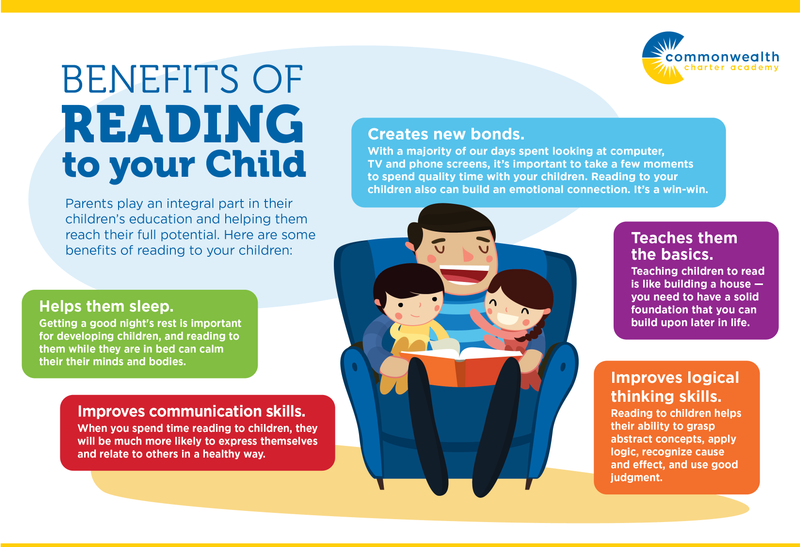 Typical cases are moving or changing educational institutions.
Typical cases are moving or changing educational institutions.
Children who have had an unpleasant or traumatic experience, such as a car accident or house fire, may also suffer from anxiety later on.
Family quarrels and conflicts can also cause children and adolescents to feel insecure and anxious. Finally, some children are generally more prone to anxiety than others.
How to help a child with anxiety?
To help your child deal with anxiety, the first step is to talk to him about what is bothering him. Reassure the child and show that you understand his feelings.
If the child is old enough, explain to him what anxiety is and what physical effect it has on the body. Describe anxiety as a wave that breaks in and then recedes.
In addition to talking to your child about his anxiety, it is important to help him find a solution to a particular worrying situation. And the best strategy is not to avoid, but to recognize your anxiety and prepare a plan of action in advance in this situation.
Other ways to relieve anxiety in children and adolescents:
- teach your child to recognize the signs of anxiety;
- Encourage your child to manage their anxiety on their own and seek help when needed.
- children of all ages find support in a clear daily routine, so try to stick to the usual routine in any conditions;
- If your child is worried about negative events such as bereavement or separation, find books or movies to help them understand their feelings.
- if you know a change is coming, such as a move, prepare your child for it by talking about what needs to happen and why, while being careful not to become overly anxious yourself;
- for young children, distraction can be helpful. For example, if they are worried on the way to somewhere, then on the way they can play a simple game, for example, who will notice more red cars;
- take an empty tissue box and turn it into a "worry box".
 Have the child write down or draw their worries and “put” them in the box. At the end of the day or week, take the box apart with your child and discuss any accumulated fears and concerns.
Have the child write down or draw their worries and “put” them in the box. At the end of the day or week, take the box apart with your child and discuss any accumulated fears and concerns.
Unfortunately, it is not always possible for parents to help their child cope with anxiety on their own. If the condition of the child does not improve, despite all the measures taken, then you need to contact a specialist. on mental health, who knows how to work with young patients.
How can we help?
| If you find some of the symptoms described above in your child, then this may signal the development of a mental disorder. In this case, it is worth contacting a psychiatrist for timely diagnosis and, if necessary, treatment of the disease. In addition to face-to-face communication , we offer remote consultation service (online reception) , which is not inferior in quality to a face-to-face meeting. Thus, you can get qualified help high-level specialist, wherever you are. |


